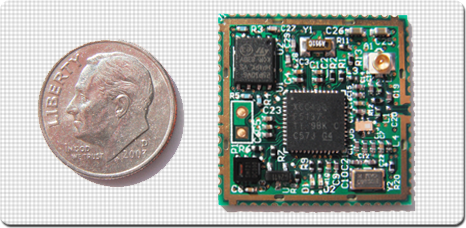Open source vs. global warming


SuRF in this case stands for Sensor Ultra Radio Frequency. The $300 developer kit implements a low power, low bit rate radio system running under the IEEE 802.15.4 standard at 900 MHz, using the TinyOS.
By using the 900 MHz ISM band, whose approval predates WiFi, an 802.15.4 radio can have a long range at a low bit rate. The 802.15.4 specification is the basis for the Zigbee standard. The frequency band was first used for cordless phones.
The company hopes that consumer appliance, business equipment and medical device makers will buy millions of these chips, building applications using the kits that let people manage energy use from the cloud.
It's a big ask.
People Power is fighting not only against global warming, skepticism over IPv6 and a name straight out of the 1960s, but an estimated 387 competitors in the energy management space. CEO Gene Wang previously ran BitFone, now part of HP, and got his start as a VP at Borland. (Ask your dad who they were.)
Google, Comcast, Verizon, and AT&T have all announced energy management services. Appliance makers are adding technology to their offerings that cut power use automatically. The commercial space is dominated by companies like GE and Siemens.
People Power hopes low cost ($5 per chip in quantity), open source, IPv6 and consumer buzz can give it a place at this crowded table.
But if consumers can only save roughly $10 per month by implementing this technology, something else must happen to make it compelling, which is why Wang talks a lot about the Internet of Things.
Once items are connected via sensors to IPv6 you have intelligence that can be used for finding your stuff, turning it on-and-off remotely, and for home security. (Your flat screen can know when it's being stolen and emit a signal that draws police to the thief.)
Implementing the technology at the point of manufacture would put this power of identification, remote automation, and energy management into the hands of consumers through Internet portals and smart phone apps.
Manufacturers could consider this against current RFID technology for managing inventory from the plant to the store shelves, at which point control of it would pass to consumers.
Having written about this sort of thing since 2003 I find it personally gratifying that real applications are finally developing and I didn't make the whole thing up.
But now comes the market test.